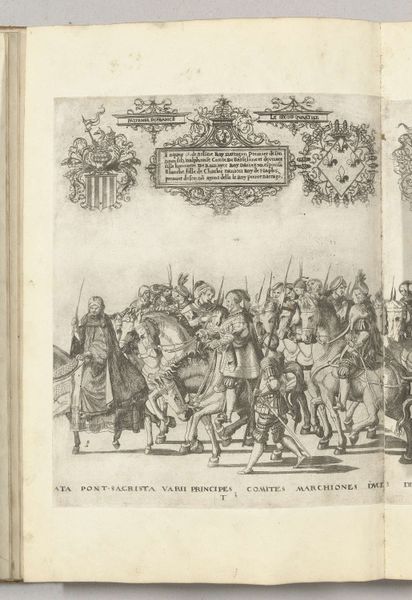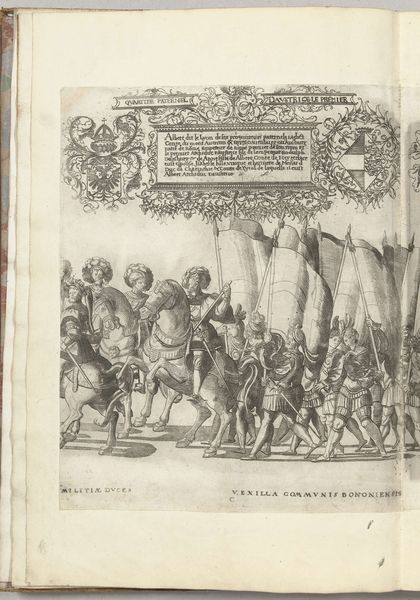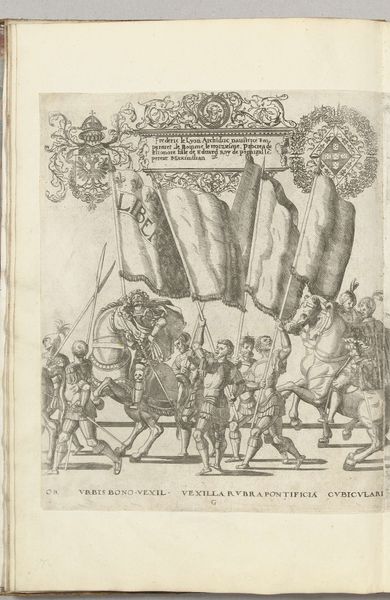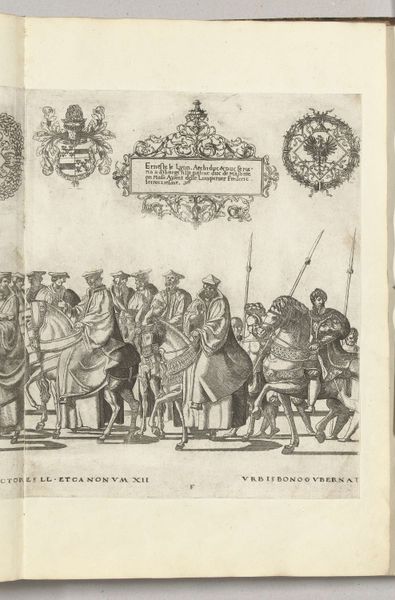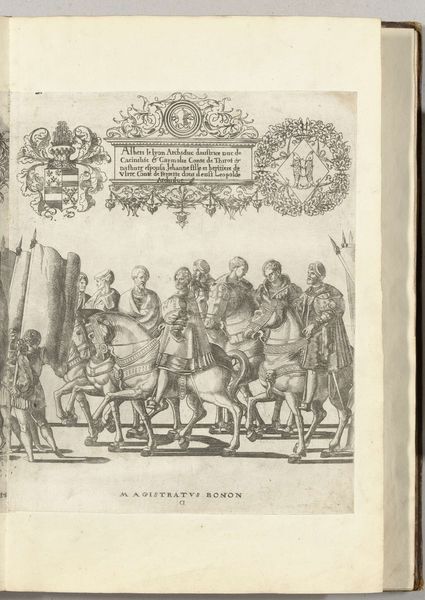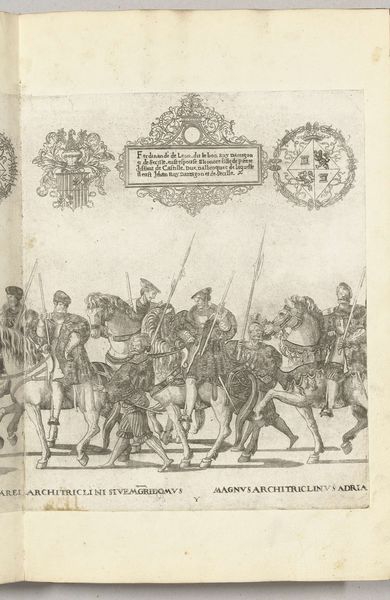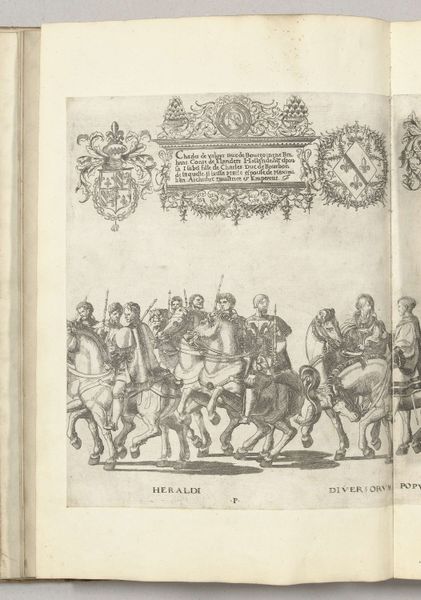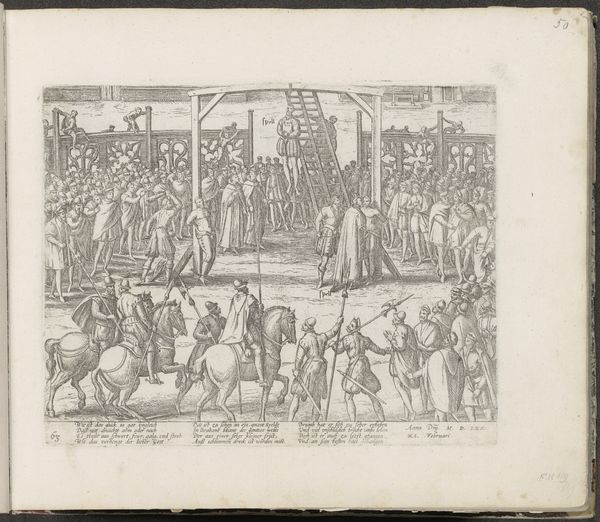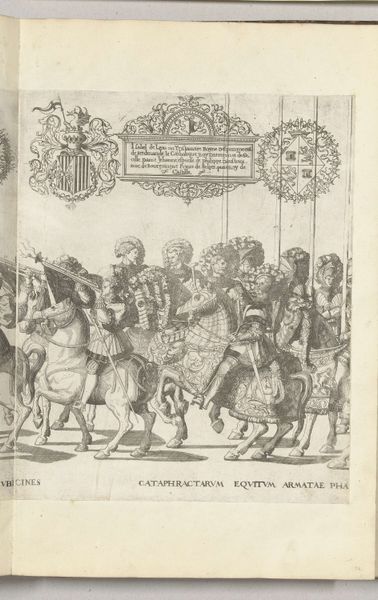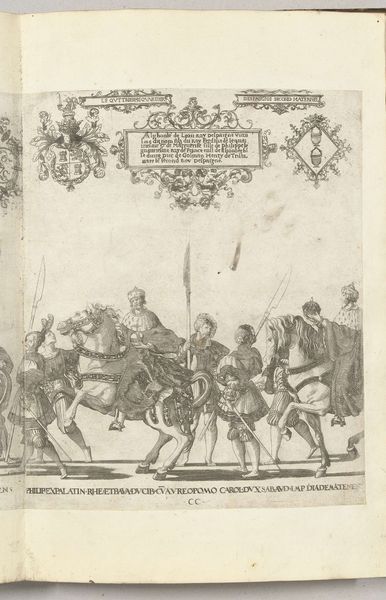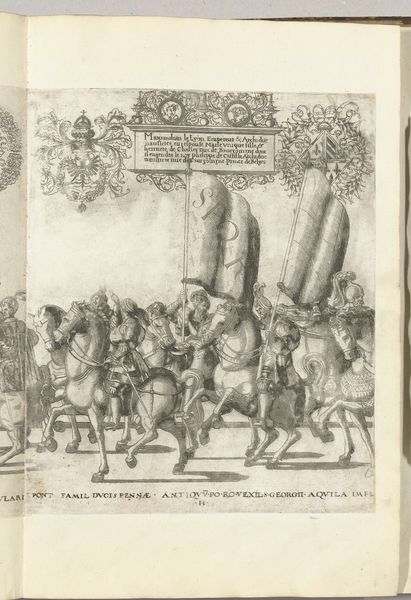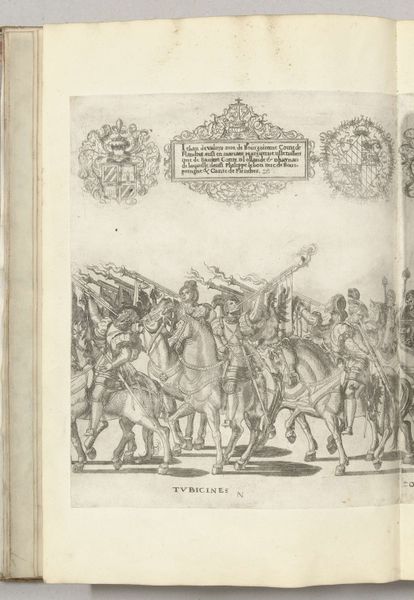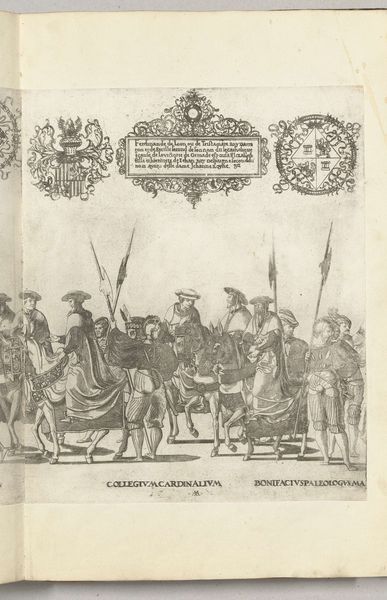![Hendrik III van Nassau-Breda, plaat [FF] by Nicolaas Hogenberg](/_next/image?url=https%3A%2F%2Fd2w8kbdekdi1gv.cloudfront.net%2FeyJidWNrZXQiOiAiYXJ0ZXJhLWltYWdlcy1idWNrZXQiLCAia2V5IjogImFydHdvcmtzLzlkMmI0ZjY5LTM4YjgtNGQ2YS05YTQ0LTU3MDFkNDUwOTllMS85ZDJiNGY2OS0zOGI4LTRkNmEtOWE0NC01NzAxZDQ1MDk5ZTFfZnVsbC5qcGciLCAiZWRpdHMiOiB7InJlc2l6ZSI6IHsid2lkdGgiOiAxOTIwLCAiaGVpZ2h0IjogMTkyMCwgImZpdCI6ICJpbnNpZGUifX19&w=3840&q=75)
drawing, print, engraving
#
portrait
#
drawing
# print
#
figuration
#
11_renaissance
#
history-painting
#
northern-renaissance
#
engraving
Dimensions: height 360 mm, width 295 mm
Copyright: Rijks Museum: Open Domain
Curator: Let’s turn our attention to this striking engraving by Nicolaas Hogenberg, dating from the period of 1530 to 1536. It’s a portrait titled "Hendrik III van Nassau-Breda, plaat [FF]." Editor: My first impression is one of formalized power. There's a density to the composition with all those figures, and the neutral palette evokes a somber feeling despite the procession depicted. The regimented lines of spears definitely emphasize authority and control. Curator: Exactly. The historical context is key here. Hendrik III was a significant figure—a nobleman deeply embedded in the political landscape of the Netherlands. This print likely served to bolster his image, reflecting his status and power within society. The Northern Renaissance was a period where portraiture served those functions, particularly for those with political ambitions. Editor: And the inclusion of his coat of arms—twice, in fact—drives that home. The print becomes less about likeness and more about constructing and broadcasting an identity, and emphasizing lineage. It makes me wonder about the intended audience, and what stories they would tell, reading these symbols of power. Curator: It’s highly likely that the print was circulated amongst the elite. Disseminating his image helped reinforce his position among his peers, as well as communicate a particular message to those under his governance. Think of it as early modern public relations. Editor: And it's intriguing how even in such a formal depiction, you sense a carefully constructed narrative. Every detail, from the horses’ trappings to the arrangement of figures, seems designed to convey a sense of established authority. I wonder what the underrepresented would make of it today, since for centuries it was crafted only to appeal to a niche part of the population. Curator: Precisely! The rigid formality highlights social stratification—this wasn't just about artistic expression, but also about maintaining social order and hierarchies. Considering the legacy and influence of these historical figures prompts important conversations, in the museum and elsewhere. Editor: Absolutely. Analyzing the artwork through this lens allows us to engage with complex themes of power, representation, and identity—even five centuries later. Curator: It provides such important insight into the mechanisms that underwrite our cultures. Editor: It shows, perhaps, how art never simply depicts the world, but shapes it, too.
Comments
No comments
Be the first to comment and join the conversation on the ultimate creative platform.
